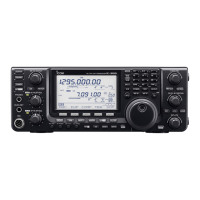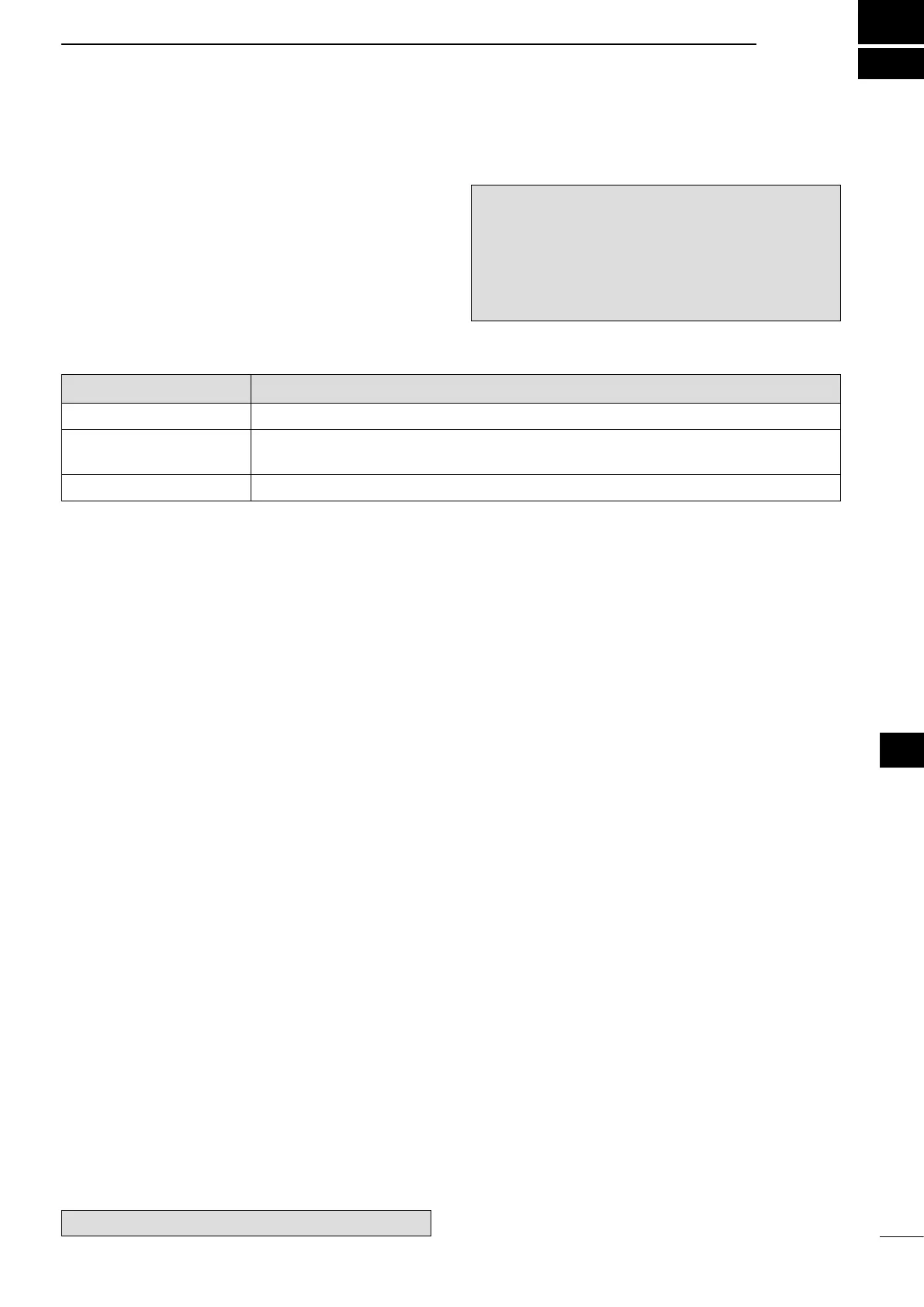10
138
MEMORY OPERATION
1
2
3
4
5
6
7
8
9
10
11
12
13
14
15
16
17
18
19
20
21
■ General description
The transceiver has 106 Memory channels in each fre-
quency band. (99 regular, 6 scan edges and 1 call)
The Memory mode is very useful to quickly change to
often-used frequencies.
While in the memory mode, all 106 Memory channels
are tunable, which means the programmed frequency
can be tuned temporarily with [MAIN DIAL].
NOTE:
Memory data can be erased by static electricity, elec-
tric transients, etc. In addition, they can be erased by
malfunction and during repairs. Therefore, we recom-
mend that memory data be backed up or be saved
to a PC using the optional CS-9100 c l o n i n g s o f t -
w a r e .
Memory Channels Descriptions
1–99 Regular Memory channels with Split frequency capability.*
1A/1b–3A/3b
Program Scan Edge Memory channels with only Simplex capability.
Stores the scan edge frequencies for programmed scans.
C Call channel with Split frequency capability*. Instantly recalls a specified frequency.
*Usable only on HF/50 MHz frequency bands.
D Memory channel contents
The following information can be programmed into
Memory channels:
•Operatingfrequency(p.37)
•Operatingmode(p.43)
•IFlternumber(p.73)
•Splitdata(p.82)
( Usable only on the regular Memory channels and
Call channel on HF/50 MHz frequency bands.)
•Memoryname(p.143)
•Duplexdirection(DUP+orDUP–)andfrequencyoff-
set (pp. 65, 163)
•Subaudible toneencoder (p. 65), tonesquelchor
DTCS squelch ON/OFF (pp. 62, 63)
•Subaudibletonefrequency(p.65),tonesquelchfre-
quency or DTCS code with polarity (pp. 62, 63)
•URStationcallsign(p.86)
•R1/R2callsign(p.87)
•CallsignsquelchorDigitalcodesquelchON/OFF
(p. 114)
•Digitalcode(p.114)
The optional UT-121 is required for DV mode operation.

